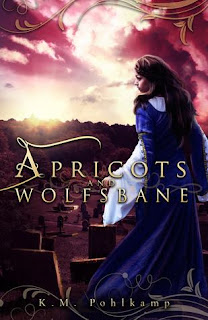3.7- 1920s Women in Law Enforcement- the factual and the fictional
1920s Women in Law Enforcement- the factual and the fictional
The real 1920s were a
time of incredible change in the face of women’s rights and empowerment in the
UK.
Allow me to paint a picture for you.
In 1920, the economy is
trying to mend from the first world war. You might be on rations for things
like meat and sugar and flour.
Women have had the
vote for a whole 2 years. (1918 was the year the first of the laws allowing
ladies to vote was introduced) there was enormous social and political opposition
to this.
Women in policing,
well, that’s a curious story. According to the articles, the first female
British police officer was Edith Smith, in 1915. But before that, the force had
‘matrons’- women who helped out with cases surrounding women’s crimes. I
imagine, dealing, vastly, with those of violence against women and sexual
assault.
 |
| Image from Wikipedia: Women in Law Enforcement in the UK |
The first female
superintendent wasn’t until 1930, Dorothy Peto, a lady of strong social and
political status.
There’s a lot I’m glossing
over there- equal pay, separation of men and women squads, there were even
arrest rights lacking for female officers. Keep in mind, this didn’t get fixed
until the 70s. As awful as that might be to consider- I instead choose to focus
on the women who, despite the separation, the social, financial and legal
restraints, still went into work every day. They knew they had less standing,
fewer rights, less respect, but they fought for 50 years under those
conditions.
I certainly don’t have
that sort of backbone, the women in that era were made of sterner stuff than
the gooey marshmellow in me.
When I first started
writing the Nightmare Detective, I quickly realized I needed to dig into both
the suffrage movements in the UK and the state of female policing before DI
Beaumont. None of my characters are
based on real people, except, one. And it’s
probably not who you think.
I very much based Anne
Montagu on one of the early suffragists. While Rose hardly sees Anne in a white
light, it was extremely important to me that the character have a strong
background and show that it was women like her who pioneered the landscape for
DI Beaumont’s rise in the AOC.
Blending in some magic
When building magic
into the real world, nay, any world, you must consider how it would change or effect
certain events. In the Myth and Magic world, this is most obvious with
Animancy, predominately possessed by women. I had to immediately consider this
as one of the strongest points for women’s rights- if women possess the literal
magic to fix the human body, it will be one of their strongest pillars for
equal pay.
Along comes Anne
Montagu, once more, to banner such causes. This is a woman made of pure fire
and claws. She’s an old-guard, a champion of women’s empowerment, and her push
to these ends has enabled future generations.
Medicine in this
alternate world might be a bit behind what we’d expect of the day- after all,
who needs penicillin when you can close wounds with willpower, but as with all
discoveries of science, discoveries of magic have their downside. Animancy is a
potent power that can also be used for ill. Although
more on that in my next book, A Study in Shadow.
When to just change the factual into fiction
I knew going into The
Nightmare Detective I would need to take Liberties. Liberties, you see, are
unavoidable on occasion when dealing with the fantastic. There’s a fine line on
realism when you have undead flesh-eating corpses, and succubus brothels in White
Chapel.
For me, I wanted a
proper sense of the times. Police boxes (little holes in the wall in local
areas) mostly disappeared after WW2, transformed into stations, but still
appeared before that. People didn’t travel much and parliament was very
different to what we see today. Blending these elements into the story help
create a sense of the actual places and people.
Tell me about your
historical works, the ups and downs! I’d love to hear from you!


Comments
Post a Comment